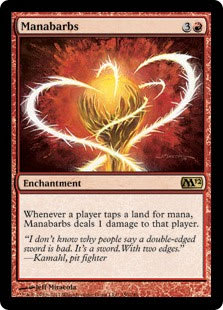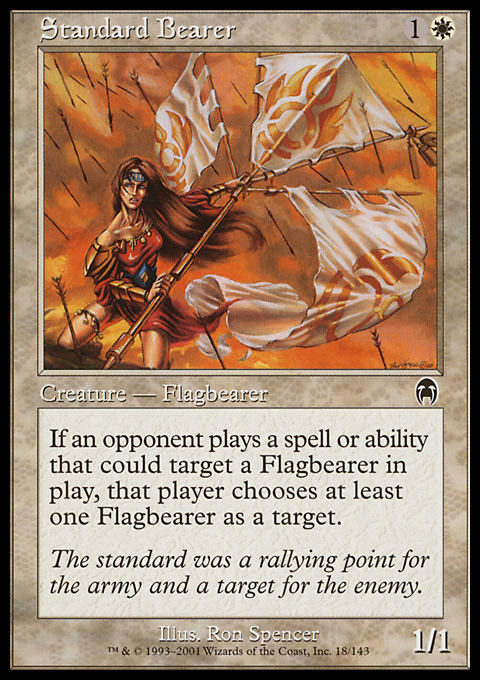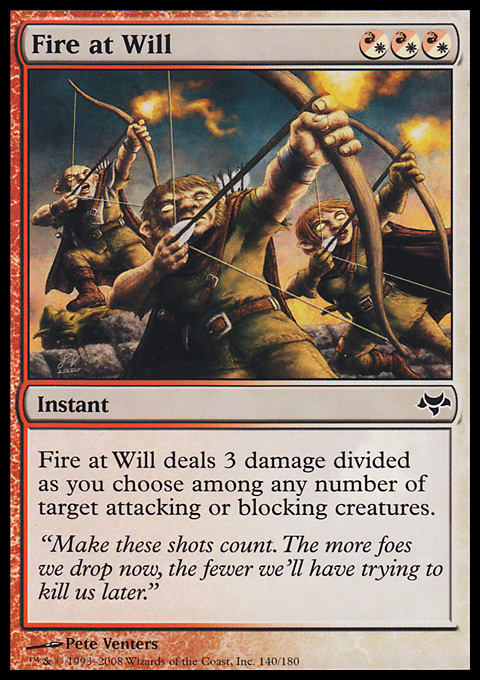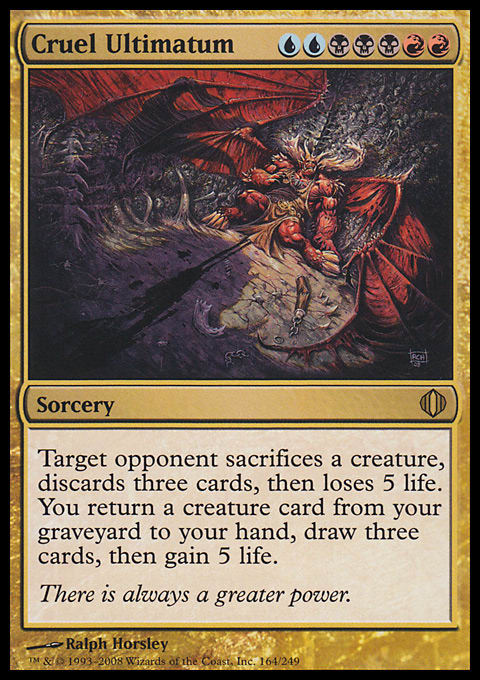In Magic, as in life, I am always guided by one simple idea: What would Clint do?
Clint Eastwood’s classic western The Good, the Bad and the Ugly is a perfect metaphor for multiplayer Magic, with a lot to teach us about politics, strategy, and how to turn the table on your opponents when you're outgunned.
(Here be spoilers: Go and watch the movie if you haven't already.)
The Hangman’s Noose
At the start of the film, Blondie (Clint) and Tuco (Eli Wallach) are partnered up with the explicit agreement that Blondie will turn Tuco in to the local sheriff, collect the reward, and then spring Tuco and split the reward with him. They’ve been doing that for a while, but Blondie double-crosses Tuco when he’s milked the trick for all it’s worth. This is one of the most important lessons in multiplayer politics: The second a deal doesn’t serve your interests, you should head for the exits. Of course, the corollary is that when the deal no longer serves your partner’s interests, that player’s metaphorical pistols will be pointed at your back.
That means you should never put yourself in the position of having to trust an opponent, even if you have an explicit agreement (what I call high politics). Be aware of what every opponent’s interests are, when those interests converge with yours, and when they diverge. Otherwise, you might be the one dancing the hemp fandango.
A Golden-Haired Angel Watches Over Him
Your opponents can only win the game over your dead body, but that doesn’t mean they can't occasionally be useful. Someone who is drawing fire from your other opponents, or who can deal with a shared threat, or is just not as fast on the draw as you, might be a valuable ally . . . for a time. Depending on the situation, you might leave a weaker player alone (your own personal Tuco), put pressure on whoever tries to kill him, or even burn up your own resources to save him; the important thing is to recognize when an opponent is more valuable alive than dead.
For example, in a five-player Kingdom game, my buddy A.J. was playing a horrifyingly effective chaos deck. When he dropped Manabarbs, he became The Threat, and everyone came after him with both barrels . . . everyone except the guy with Vish Kal, Blood Arbiter and Serra Ascendant. A.J. was doing more damage to me than anyone else was, but I knew that his chaos/punisher deck would be a constant distraction to my enemies and would help me to weaken the King (I was an undercover Bandit at the time), but I also knew that my Orzhov deck had enough life-gain to give me the edge over everyone else. They all burned through their resources at a furious pace, each player taking damage every time that player cast a spell, while I took advantage of their distraction and killed the King.
When You Have to Shoot, Shoot—Don’t Talk
Then again, there are some decks that are too scary to let live: decks that have enormous potential to recover from a beating and kill the whole table out of nowhere. Have you ever played a game in which everyone balances against a single scary deck and then leave that deck alone to rebuild, and it eventually wins? That’s the kind of deck I’m talking about here. A major skill in multiplayer is being able to distinguish between decks that can be knocked down, and then ignored for a while, and decks that need to be knocked out.
Some of the things you need to think about (for every opponent) are:
- What is this opponent’s path to victory?
- How far down that path is the opponent?
- How explosive is that path?
- How hard is it for you to disrupt the opponent’s plans again?
- How many resources the opponent been able to accrue?
- How much rebound potential does the opponent have?
- How much does the opponent threaten your path to victory?
- How much attention is that opponent drawing from the rest of the table?
Consider the example of a reanimator deck that became The Threat until everyone balanced against it; sure, you killed all its creatures, but with a nice, full graveyard, it only takes a single Living Death to regain control of the board. I hate to betray my necromantic brethren, but maybe you should just take a deck like that out of the game before it goes Thriller on your ass. White enchantment-based decks or anything Esper is similar—it only takes a single Replenish or Empty the Vault to rebound from an empty board to a dominant position. An explosive aggro–midrange deck can also recover very quickly, which is why you should always take out Gisela, Blade of Goldnight and Bruna, Light of Alabaster first. And never trust anyone with Swiftfoot Boots.
But look beyond the obvious. What about a blue deck that has been drawing a ton of cards? Even if the player’s board position has been wrecked, his or her hand is full while everyone else is out of gas. Take that player out now—before he or she wrecks you. Modern green decks have a lot of this potential as well; after the second Boundless Realms, the deck is nothing but business cards, giving that player the potential to cast all the monsters in his or her hand in one turn . . . so don’t give the player another turn.
Multiplayer technology is a lot deadlier than it used to be; sometimes, you need to kick a man when he’s down so that he doesn’t get back up again.
You’re Smart Enough to Know that Talking Won’t Save You
The main dynamic in the story is between Blondie, Tuco, and Angel Eyes (Lee Van Cleef). None of them trusts each other, but they need to work together. The reason this is such a great parallel to a multiplayer game is that each of them knows that the other two are planning to kill him. Angel Eyes leaves Blondie alive because he needs him, not because he likes or trusts him, and Blondie goes along with him because it’s his best option. This is cooperation without politics.1
When Tuco catches up with them, Blondie agrees to work with him because he knows that Tuco will want to find and kill Angel Eyes and his men, which suits Clint right down to the ground. Playing both sides against the middle is the name of the game.
Also, Blondie knew how valuable he was to Angel Eyes, and he used that to buy time—not to strengthen Angel Eyes, but to take out his other allies one by one. In strategic parlance, Blondie was bandwagoning with Angel Eyes because he was too strong for Blondie to take him alone. But bandwagoning with The Threat doesn’t mean doing nothing; if the stronger players are leaving you alone, you should focus on thinning and grinning, so that you can later find a way to win.
Some folks will tell you The Quiet Guy wins because he’s not a threat to anyone else, but that is fundamental misunderstanding of multiplayer. Everyone is a threat because everyone is trying to win—end of story. The Quiet Guy can win by being less threatening than someone else, or more useful.
Arch Stanton
The Good, the Bad and the Ugly revolves around hidden information—Tuco and Angel Eyes know the name of the cemetery where the gold is buried, but only Blondie knows the name on the grave. In multiplayer also, hidden information is paramount. One of the problems with being too political is that you tend to give away hidden information about what you’re scared of and whom you're gunning for. That information can help you to build a coalition if others are afraid of the same thing, but it can also expose your weaknesses.Look at it this way: In the final gun battle, did anyone have any doubt that Tuco was going to shoot Angel Eyes first? Of course not—he wasn’t holding anything back. As a result, Angel Eyes had to kill Tuco first. That gave Clint the luxury of watching those two fire on each other because neither of them saw him as his primary threat, and neither of them knew what Clint was planning. That’s the advantage of being The Quiet Guy.
Those with Loaded Guns . . . and Those Who Dig
The last lesson Blondie teaches us is the most practical: Always keep one eye on the endgame. Blondie had a final trick up his sleeve that he’d prepared in advance, knowing that he’d be left facing Tuco, and that is exactly what we should be doing in multiplayer. Always think about whom you're going to be facing in the late game (hint: It often won’t be the strongest player), and try to save something to deal with him or her—otherwise, you're just aiming for a second-place finish.
This is why it pains me to see people waste a tutor on a generic spell in the mid- to late game. If you don’t need a particular card immediately, save that tutor until you know who will be your final opponent, and then search up a bullet with his or her name on it. It also means you need to build a multiplayer deck that is capable of dealing with everything a single opponent has to throw at you (this is called Resilience in Decktagon terms). You want to be able to drop some focused, hard-hitting bombs on your last opponent. Cards like Unnerve, Tribute to the Wild, and Innocent Blood are the kinds of value-generating spells that will help you to survive to the endgame, but you need a Cruel Ultimatum, Rain of Thorns, or Phthisis to put that last opponent in the ground. It’s hard to balance building for the early-, mid-, and late games, but when you get that balance right, it can be a beautiful thing.
One of the best ways to approach the end-game strategy is to work backward; think about what you have in your hand or deck at the start of the game and who is most vulnerable to it. Then, kill everyone else first. For example, if I have a Decree of Pain in hand, I should be able to make short work of the Saproling player, so my goal would be to craft an endgame that was just me against Mr. Token. This is a corollary of classical threat assessment (targeting the strongest opponent first and so on), but it is also a tool to help you distinguish between different threats: Figure out whom you can kill most easily in a duel, and leave that opponent alive until the end.
WWCD?
Until next time . . .
Wah waaahh waaaaaaaaah!
P.S. I can't promise immediate feedback, but I’m still taking lists for a Deck Doctor series. Hit me up on Twitter with a decklist on TappedOut.net, along with a detailed description of what you’re trying to do and what trouble you’re having.
1 At one point, Angel Eyes says to Clint, “You’ve changed partners, but you’ve still got the same deal,” but I don’t think that should be construed as politics in the Magic sense. In multiplayer, if someone makes an agreement with you, you can at least trust him or her to stick to the letter of the agreement, if not the spirit. In the movie, Clint knew Angel Eyes was going to kill him, and Angel Eyes knew he knew. And Clint knew that Angel Eyes . . . anyway, the point is that this kind of multiplayer Magic cooperation usually occurs without the need for explicit politics.






























